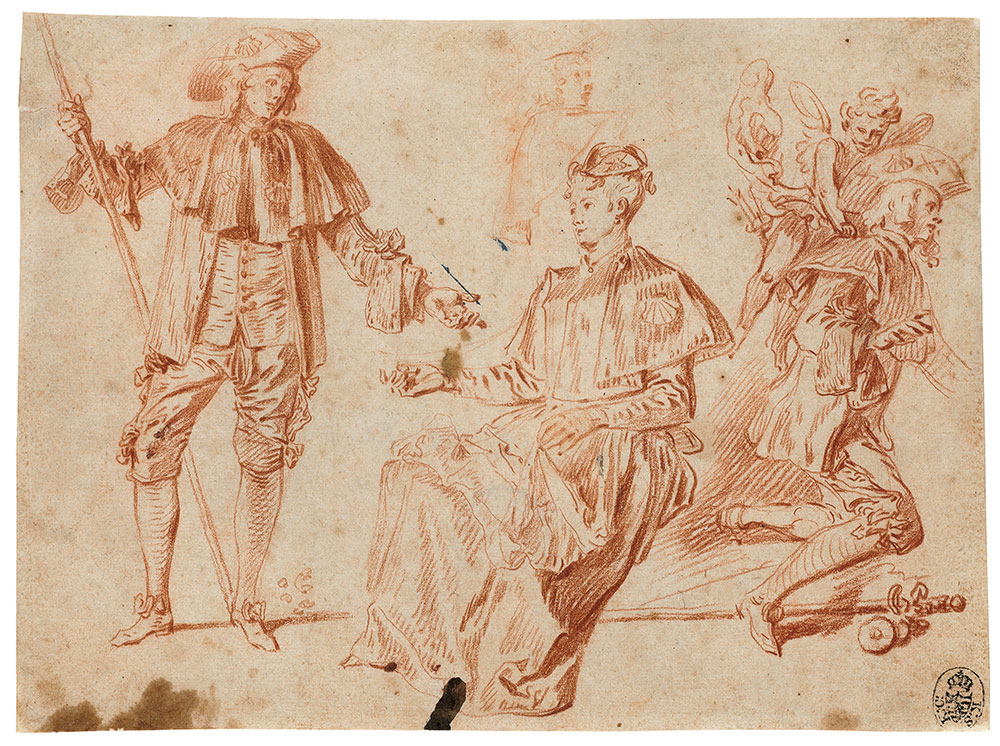
Study with Four Pilgrims and a Cupid relates to Watteau’s painting The Embarkation for Cythera. He first depicted the subject around 1709–12 and returned to it a few years later, producing two variations. In these convivial works, groups of elegantly dressed young people mingle in bucolic settings as they prepare to embark for the Greek island that was, according to classical legend, the birthplace of Aphrodite, the goddess of love. In 1717, the French Academy described Watteau’s Embarkation for Cythera as a fête galante, giving a name to the genre that would become the artist’s signature development. In this drawing, Watteau adeptly varied the pressure of the red chalk to define the fashionable characters.
Antoine Watteau
French, 1684–1721
Study with Four Pilgrims and a Cupid, ca. 1709–12(?)
Red chalk
Kupferstich-Kabinett, Staatliche Kunstsammlungen Dresden, INV. NO. C 734
Jennifer Tonkovich, Eugene and Clare Thaw Curator of Drawings and Prints
The term fete galante, used to describe a group of men and women in elegant dress at leisure in the landscape, came into use around 1700 and in fact such scenes of outdoor romance already were gaining currency in theatrical productions of the 1690s. Nevertheless, Watteau’s evocation of Cythera in the canvas at the Louvre remains the most poetic and memorable example of the genre.
Watteau spent the majority of his career outside the official French academy. He drew incessantly, making studies and carrying them in a portfolio, turning to this repository when he needed figures for paintings. The separate studies scattered across this page, with their mix of orientation and scale, reveal Watteau’s process of compiling individual motifs rather than devising a composition first and then methodically making studies of each figure in it. The male figure wearing the theatrical costume of a stylish follower of Venus is drawn three times on the sheet in different poses, and appears in a few versions of the painted composition while the female devotee at center—who seems as if she’s the main study on the sheet—was not used in a painting. As your eye roves across the page, the individual studies reveal several moments of creation that eventually contributed to one of the most celebrated paintings in Western art.
